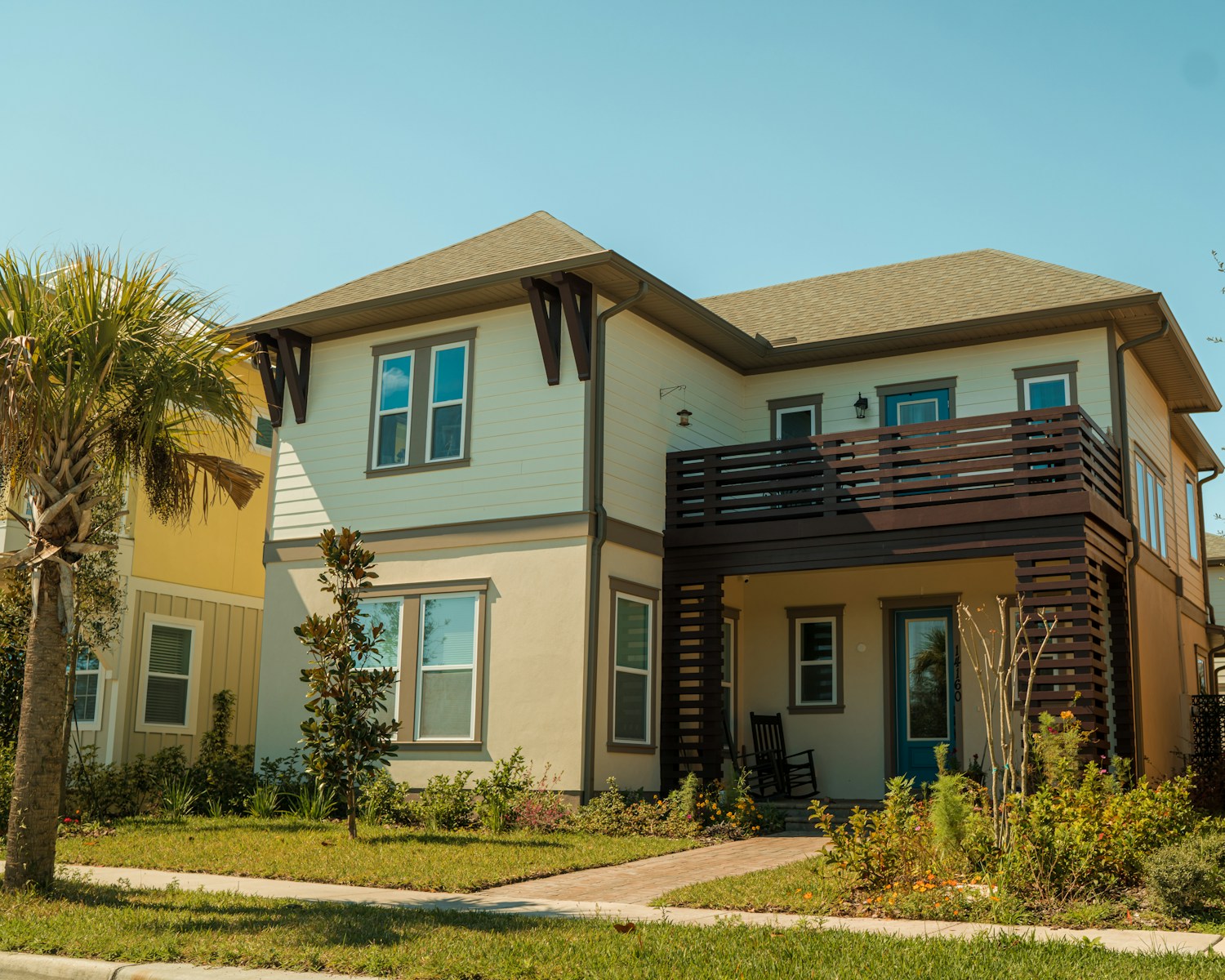Historical Trends and Suburban Expansion
The trend toward larger homes in America began in the post-World War II era. As soldiers returned home and the economy boomed, there was a significant demand for housing. The expansion of suburbs offered an opportunity for developers to build new communities with ample space. The introduction of mass production techniques, such as those used in Levittown, allowed for the construction of affordable homes on large plots of land. The availability of cheap land in suburban and rural areas led to the development of bigger homes, as space was no longer a limiting factor.
The Post-War Economic Boom
The post-war economic boom played a crucial role in shaping the American housing landscape. With increased wages and a strong economy, families had more disposable income, which they often invested in larger homes. The government also played a part by offering subsidies and tax breaks to encourage homeownership, further fueling the demand for spacious living.
Levittown: A Case Study
Levittown, one of the earliest examples of suburban development, became a model for future housing projects. Built by the Levitt family, these homes were affordable, mass-produced, and designed for the growing American family. With standardized designs and efficient construction methods, Levittown homes demonstrated how large-scale suburban developments could meet the rising demand for housing.
Economic Factors and Consumer Preferences
One of the driving forces behind the size of American homes is the economic principle of “bigger is better.” In a consumer-driven society, more space is often equated with higher status and greater wealth. Over the years, as household incomes increased and the economy grew, so did the desire for larger homes. Builders and developers responded to this demand by constructing bigger houses to meet consumer expectations.
Mortgage Lending Practices
Mortgage lending practices have significantly influenced the size of American homes. The introduction of government-backed mortgage programs made it easier for Americans to afford larger homes. The Federal Housing Administration (FHA) and the Veterans Administration (VA) offered loans with low down payments and extended terms, enabling families to purchase properties with more square footage.
The Role of Interest Rates
Low interest rates have historically made borrowing more attractive, encouraging buyers to invest in larger properties. During periods of low interest, monthly mortgage payments become more manageable, allowing families to stretch their budgets for bigger homes. This accessibility has contributed to the ongoing trend of spacious living.
Cultural Values and the American Dream
Cultural values play a significant role in why American homes are so large. The ideal of the single-family home with a spacious interior and a large yard is deeply embedded in American culture. This image is closely tied to the American Dream, where owning a home is seen as a major life achievement and a marker of success.
Individualism and Homeownership
The desire for more space reflects the importance placed on individualism and personal property in the United States. In American culture, having a large home often symbolizes self-reliance, independence, and freedom. It also serves as a status symbol, where size and excess are associated with affluence and achievement. The phrase “bigger is better” is emblematic of this mindset, driving many Americans to seek larger homes even if they don’t necessarily need the extra space.
The Role of Suburbanization and Land Availability
Unlike many European and Asian countries, where land is scarce and densely populated cities dominate the landscape, the United States has vast expanses of land, especially in suburban and rural areas. The availability of inexpensive land has allowed developers to build larger homes with bigger lots, making spacious living more accessible.
Zoning Laws and Development
Suburbanization has also fueled the demand for bigger houses. In the suburbs, there is ample room for sprawling developments, and zoning laws often prioritize low-density, single-family homes over high-density housing options. This has led to the construction of large homes with multiple bedrooms, bathrooms, and extra living spaces like home offices, game rooms, and gyms.
Case Study: Sunbelt States
States like Texas and Arizona, known as part of the Sunbelt, have seen significant growth in suburban areas. The vast land available in these regions has led to the development of large homes, often featuring expansive yards and modern amenities. The Sunbelt’s warm climate and lower cost of living have attracted many families seeking more space for their money.
Lifestyle Preferences and Functionality
American lifestyle preferences have evolved to prioritize space and functionality. The trend toward larger homes is partly driven by the desire for specialized rooms and amenities. For example, many modern American homes include open-concept layouts, large kitchens, multiple bathrooms, walk-in closets, and dedicated spaces for home offices, media rooms, and exercise areas.
Open-Concept Living
Open-concept designs have become increasingly popular, reflecting a shift in how families interact and entertain. This layout allows for seamless transitions between the kitchen, dining, and living areas, making it ideal for social gatherings and family interactions. The emphasis on space and comfort reflects the way Americans live and use their homes.
Privacy and Personal Space
In addition, American families tend to value privacy and personal space. Larger homes provide each family member with their own room, bathroom, and designated areas for work or hobbies. This preference for individualized space is a key factor in the demand for bigger homes.
The Influence of Real Estate and Marketing
The real estate industry has played a significant role in promoting larger homes as a desirable investment. Marketing strategies often emphasize square footage, spacious layouts, and luxury features as selling points. The concept of “more house for your money” is frequently used to entice buyers, leading to a focus on quantity over quality.
Resale Value and Investment
The trend toward large homes has become self-reinforcing. As homebuyers expect bigger houses, developers continue to build them. This cycle is further fueled by the notion that large homes have better resale value, pushing both buyers and sellers toward larger properties. Investors often view larger homes as safer bets, anticipating higher returns in the future.
Media and Cultural Influence
Media representations of homeownership also influence preferences. Television shows and magazines often showcase luxurious, spacious homes, setting a standard for what many perceive as desirable. This portrayal contributes to the perception that larger homes are synonymous with success and happiness.
Environmental and Social Impacts
While large homes are appealing to many, they come with certain downsides. Bigger homes require more energy to heat, cool, and maintain, leading to higher utility bills and a larger environmental footprint. The construction of oversized homes also contributes to urban sprawl, which can lead to longer commutes, loss of green spaces, and increased reliance on cars.
Environmental Considerations
The environmental impact of large homes is significant. More resources are needed for construction, and the ongoing energy consumption is higher compared to smaller homes. As awareness of environmental issues grows, some homeowners are beginning to consider more sustainable options, such as energy-efficient appliances and eco-friendly building materials.
Social Dynamics and Community
The social implications of large homes are also worth considering. The focus on individual space can lead to isolation and a decline in community interactions. In contrast, smaller homes and denser neighborhoods tend to foster closer-knit communities and more frequent social interactions. The design of a neighborhood can influence the level of engagement among residents, with smaller homes often promoting a stronger sense of community.
Future Trends and Considerations
As housing trends continue to evolve, it will be interesting to see whether the preference for large homes persists or whether new economic, environmental, and cultural shifts lead to a different approach to American housing. Factors such as remote work, urbanization, and environmental sustainability are likely to influence future housing preferences.
Remote Work and Home Design
The rise of remote work has changed how Americans use their homes. With more people working from home, there is an increased demand for home offices and flexible spaces. This shift may influence the design and size of future homes, with a focus on functionality rather than sheer size.
Sustainability and Innovation
Sustainability is becoming a key consideration for many homebuyers. The demand for energy-efficient homes and sustainable building practices is growing, potentially leading to a reevaluation of what constitutes desirable housing. Innovations in construction technology, such as prefabricated homes and modular designs, may offer alternatives to traditional large homes.
For now, the sprawling American home remains a prominent feature of the landscape, reflecting both the aspirations and lifestyle choices of a significant portion of the population. While large homes offer comfort, privacy, and a sense of achievement, they also come with environmental costs and social trade-offs. As society continues to evolve, so too will the concept of the ideal home in America.




